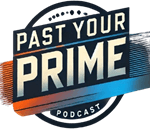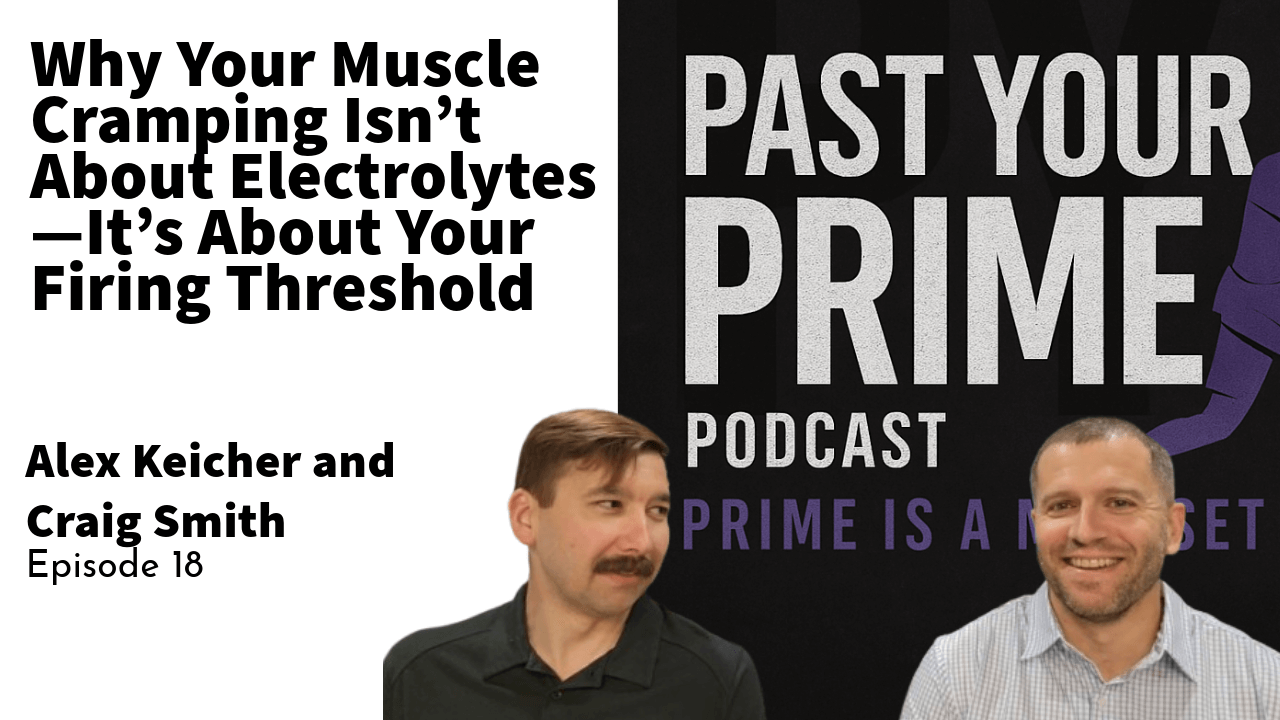Past Your Prime Podcast – Episode 1 Recap
Injury prevention sounds like a great idea—until you realize it rarely works. Most active people, whether athletes or everyday movers, eventually deal with some kind of injury. So the real question isn’t can you prevent injuries—it’s how do you stay active without constantly getting sidelined?
In this episode of the Past Your Prime podcast, Dr. Craig Smith and pro volleyball player Alex Keicher tackle the myth of injury prevention, exploring what actually works when it comes to managing pain, staying healthy, and training for the long haul.
Can You Actually Prevent Injuries?
Let’s get straight to it: you cannot completely prevent injuries. There’s no magical movement screen, perfect exercise, or training aid that guarantees a pain-free life. Human bodies are built for adaptation, not perfection. The more active you are, the higher your exposure to risk.
That’s not bad news—it’s a mindset shift.
Key Topics Covered in This Episode
1. Can You Prevent Injuries? Not Really.
- The body wasn’t built to avoid injury—it was built to move and adapt.
- Even the best training programs can’t eliminate risk.
- The longer you’re active, the more exposure you have to injury.
2. Why Injury Prevention Strategies Often Fail
- Movement screens and prediction models rarely correlate with actual injuries.
- Your body is too complex to predict injury with a single test.
- Real-world experience shows early management beats any screening.
3. Injury History > Any Screening Test
- Your past injuries are your biggest red flags.
- A smart plan includes monitoring those weak links—every week.
- Nothing replaces personal responsibility when it comes to staying pain-free.
4. Strength Training Isn’t Prevention—It’s Preparation
- Strength helps your body handle load, but doesn’t guarantee immunity.
- Focus your training on maintaining activity, not perfection.
- Train your weak links (shoulder, calf, back, etc.) consistently.
5. Training Load: The Most Common Cause of Injury
- Spikes in training volume are a major factor in new injuries.
- The 10% rule and acute-to-chronic workload ratio are key tools.
- You can’t cheat consistency—jumps lead to breakdowns.
6. Stop Waiting Until It Hurts Too Much
- Early recognition and action beat reaction. Here is a real world application of this idea called open clinics at Smith Performance Center.
- “Toughing it out” is not a badge of honor—it’s a trap.
- Tools like taping, bracing, or light modification go a long way.
7. How to Stay Active Without Constant Setbacks
- Know your limits—but don’t stop pushing intelligently.
- Own your rehab tools: traction, soft tissue work, scapular control, etc.
- Focus your off-season on building a resilient body.

“Injury prevention sounds great—until you realize it’s not real. The real power comes from recognizing problems early and managing them before they take you out of the game.”
— Craig Smith
Why the Real Goal Is Load Tolerance, Not Injury Prevention
Most injuries come from doing too much, too soon. That’s not about being weak—it’s about misunderstanding what your body can handle today versus what it could handle at a previous time in your life.
We use the term rehab standard to help understand the purpose of your workout.
If you’re dealing with pain, tightness, or recurring breakdowns, you don’t need to stop—you need to adjust the load. Training smarter is better than training harder.
Real-World Application: What Works for Active Adults
You don’t need to be a pro athlete to:
- Learn how to modify movements when something hurts
- Recognize early signs of a flare-up using key signs
- Use your personal injury history to shape your program
- Focus on maintenance, not just gains
If you’ve got a shoulder, calf, or low back issue that comes and goes—it’s not random. It’s a predictable pattern. And you can manage it with a consistent, structured approach.
Join the Conversation
Have a knee issue or want your case featured in a future Comments Section? Drop a comment on YouTube or ASK A QUESTION.
Follow us on Instagram:
Craig Smith | Alex Keicher


